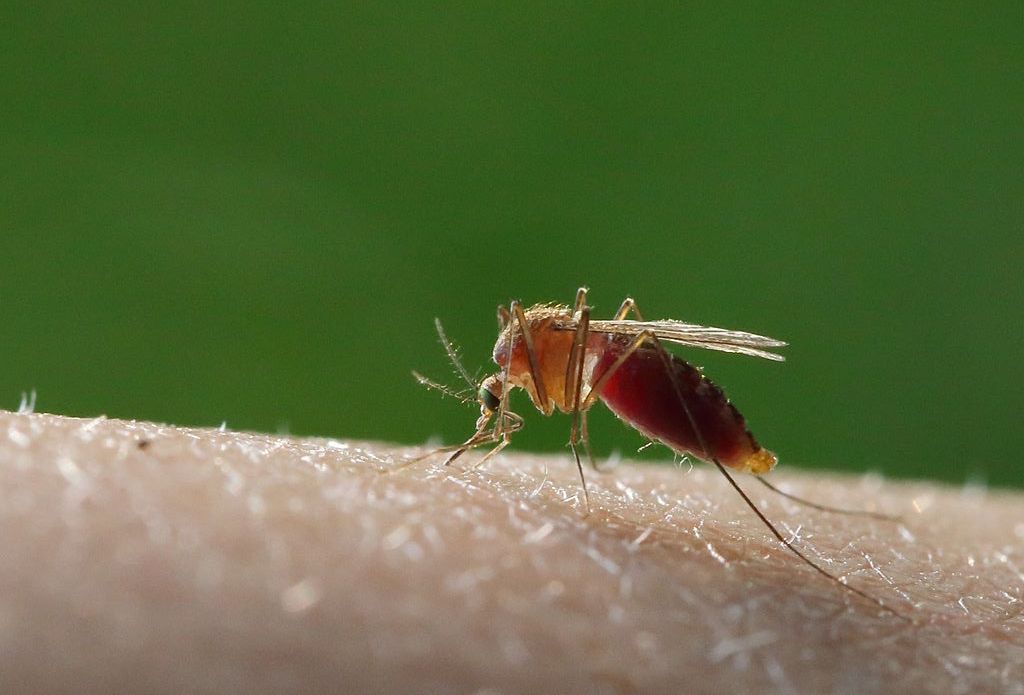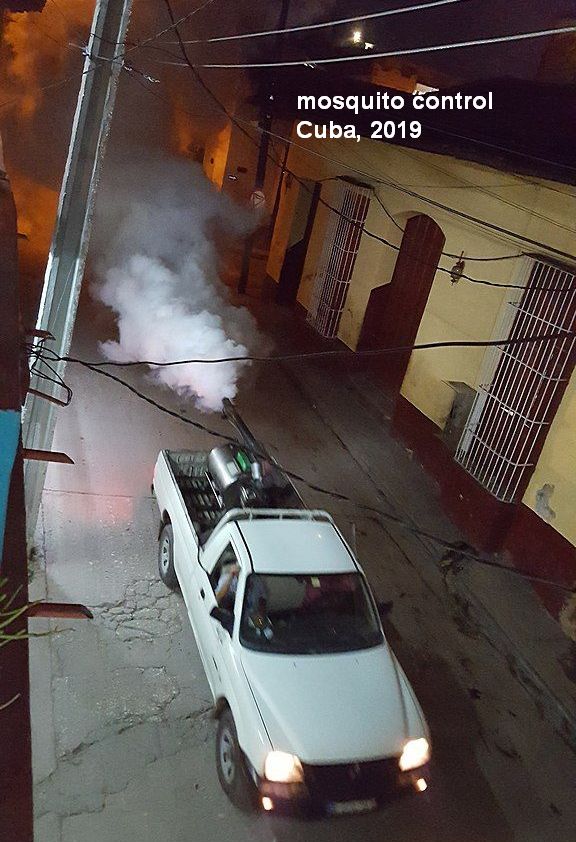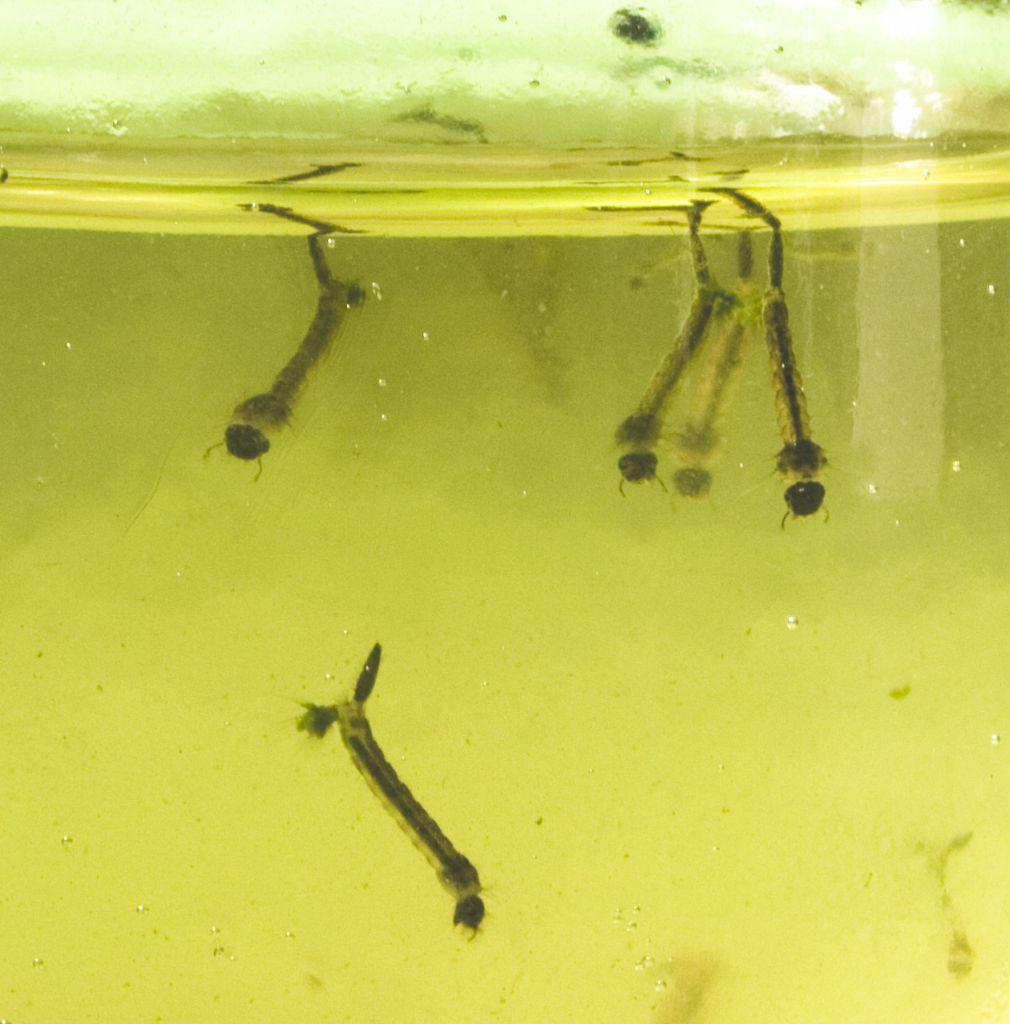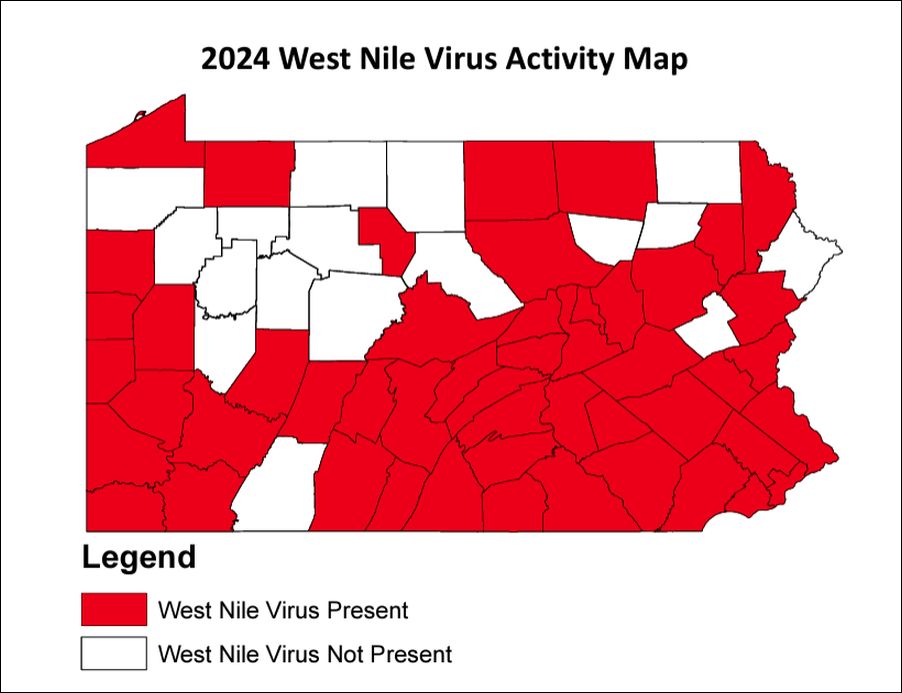
18 August 2024
Thanks to climate change, Pittsburgh is hotter and wetter, a combination that’s perfect for breeding mosquitoes and spreading West Nile Virus (WNV). WNV has few or no symptoms in 80% of infections but a <0.1% chance of death when it turns severe. (Less than 1% of infections turn severe.)
Last week I learned from PublicSource that WNV in Allegheny County has prompted the Health Department (ACHD) to fog neighborhoods where the virus is detected in adult mosquitoes. Unfortunately the weapon in use is a broad spectrum bomb rather than a bullet aimed only at mosquitoes. PublicSource examines the issue: Allegheny County ramps up mosquito control. Could it harm local ecosystems?
The fogging is done at dusk and night by a pickup truck with a dispersal (fogging) unit using insecticide Zenivex E20 (active ingredient etofenprox). I don’t have photos of ACHD’s trucks — this mosquito control truck is in Cuba, not in Allegheny County — but the photo gives you an idea of what fogging looks like. See photos of local fogging in the PublicSource article, linked above.

Here’s the active ingredient and what it kills:
Etofenprox is a pyrethroid derivative which disturbs insect nervous systems following direct contact or ingestion. It is active against a broad spectrum of pests including Lepidoptera (butterflies and moths), Hymenoptera (bees, wasps, ants), Diptera (flies and mosquitoes), Hemiptera (cicadas, aphids, leafhoppers, bed bugs, shield bugs), Coleoptera (beetles), and Thysanoptera (thrips).
— Wikipedia entry for etofenprox, paraphrased
The fogging creates a miniature insect apocalypse for small night-flying insects touched by the insecticide. This ripples up the food chain to the plants, birds and animals that rely on them. One of them is my spark bird, the common nighthawk. PublicSource points out:
A bird conservation advocate agreed that nighttime pollinators could be affected, which could have ripple effects in bird populations, such as the common nighthawks that feed after dusk.
“Even when these products are used with the best intentions … in a highly targeted manner, they certainly do have the potential to affect non-target invertebrates,” said Hardy Kern, director of government relations of the birds and pesticides campaign at the American Bird Conservancy. “And these non-target invertebrates are really important food sources for birds.”
— PublicSource: Allegheny County ramps up mosquito control. Could it harm local ecosystems?
However, “The county wouldn’t need to spray as much if more people knew how to keep mosquitoes from breeding near their homes.”
And that’s where you come in. Mosquitoes breed in stagnant water. If you have standing water in your yard mosquitoes will breed there — even in a bottle cap. Dump out the standing water to kill the larvae. Dump out abandoned tires!

Here’s what to do:
Big Takeaway from the video:
If you are being bitten by mosquitoes it’s most likely that those mosquitoes are being produced on your property. Mosquitoes do not like to travel very far. They are very weak fliers, and if they can find all the things that they need to survive on your property that’s where they will begin and end their life cycle.
— quote from PA DEP Video: Help Prevent Mosquitoes from Breeding
Read more about local West Nile Virus mosquito control at PublicSource: Allegheny County ramps up mosquito control. Could it harm local ecosystems?
NOTE that every ACHD spray effort is preceded by an ACHD press release that lists the neighborhoods to be fogged. ACHD’s press release for the week of 19-23 August (click here) includes Leetsdale, Edgeworth, Sewickley, Glen Osborne, and 10 city neighborhoods.
p.s. Here’s where West Nile Virus is in PA as of 18 Aug 2024

Your picture of the truck is really close to what the ones spraying here look like except they have a flashing yellow light bar on top of the roof and the sprayer looked more circular and was lit up. Seemed more like ozone than a big cloud of spray but you could definitely see a fog coming off the truck. The truck isn’t marked at all which I thought was strange. I know this because I had the misfortune of walking around my neighborhood as the truck drove by at around 7:30pm last week. Wish I would have seen the press release. Definitely not happy about being in the line of fire. Also saddened that this spray affects so many insects, butterflies and bees. Wonder if this is why we aren’t seeing any Monarchs…